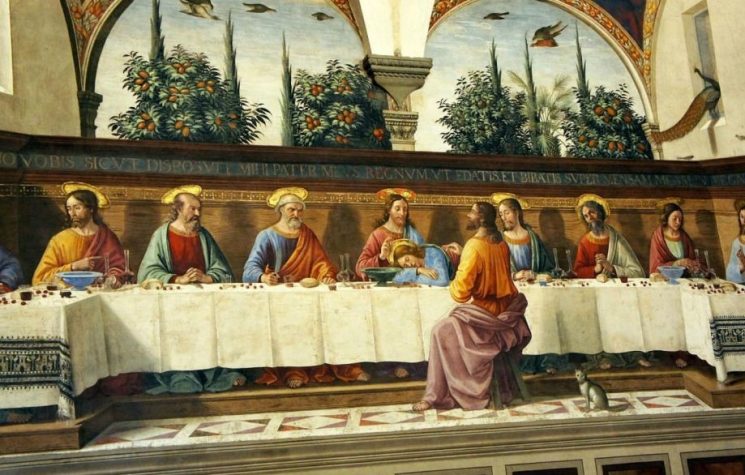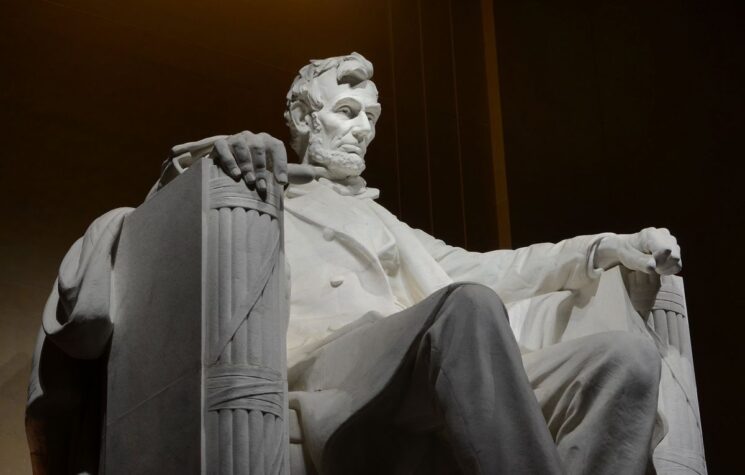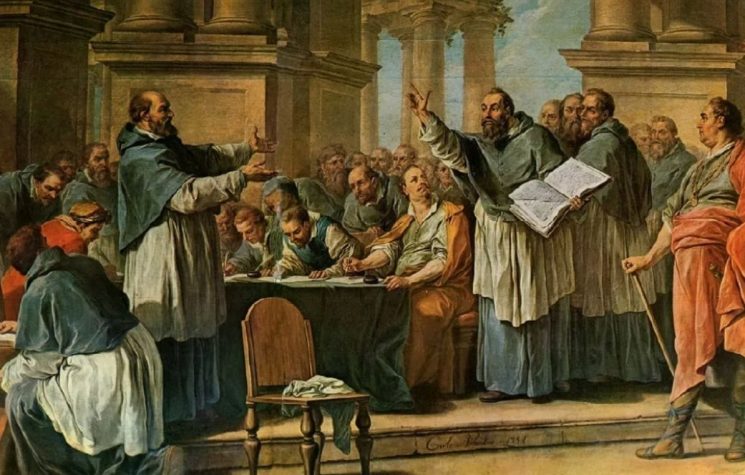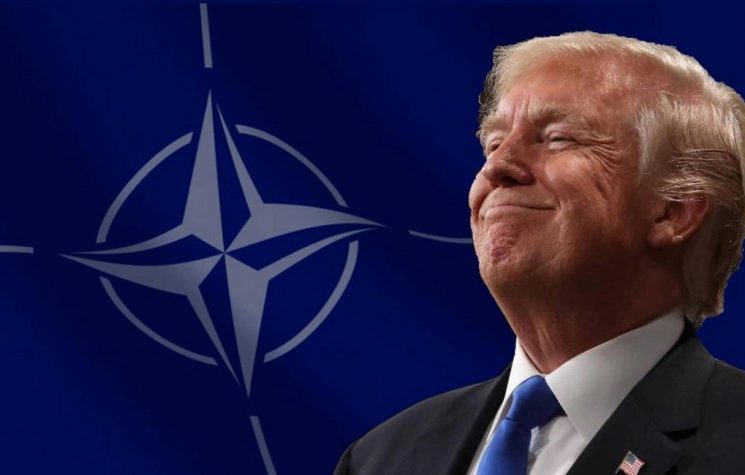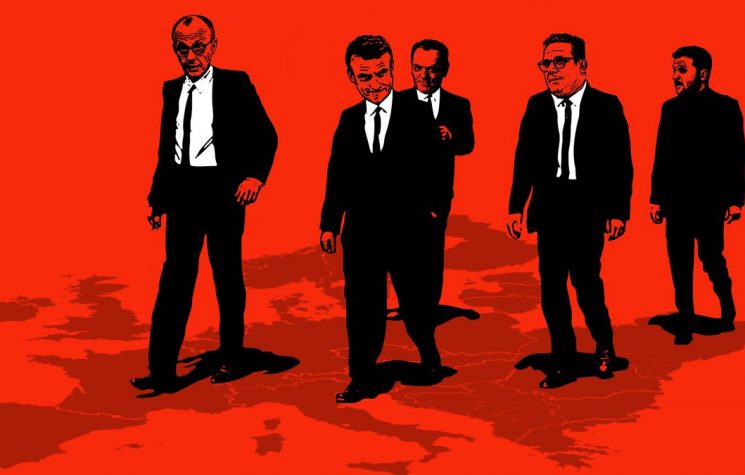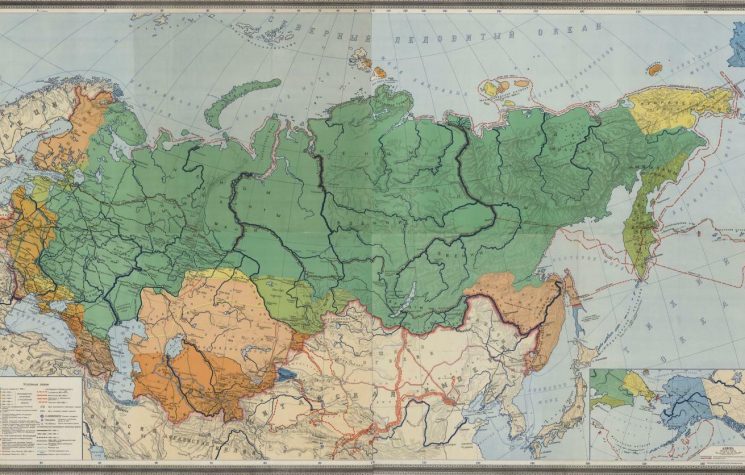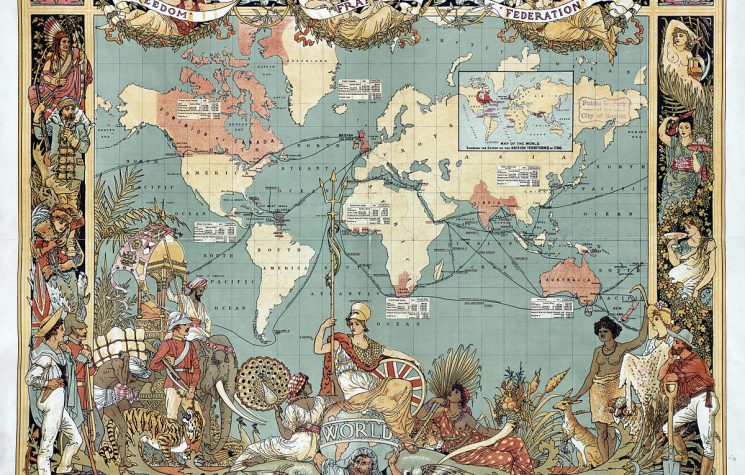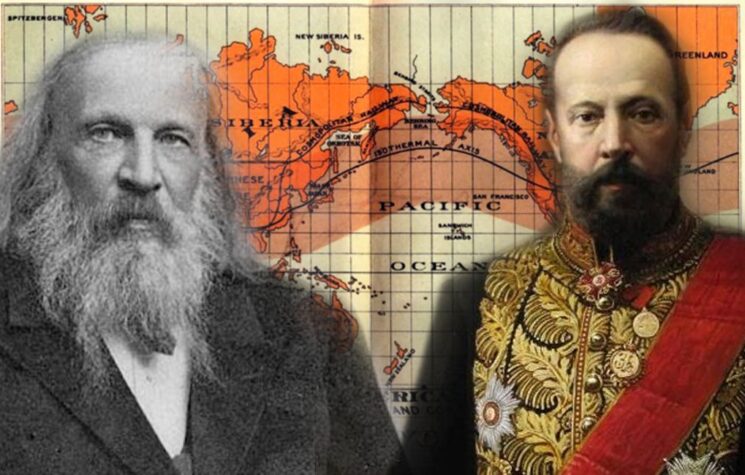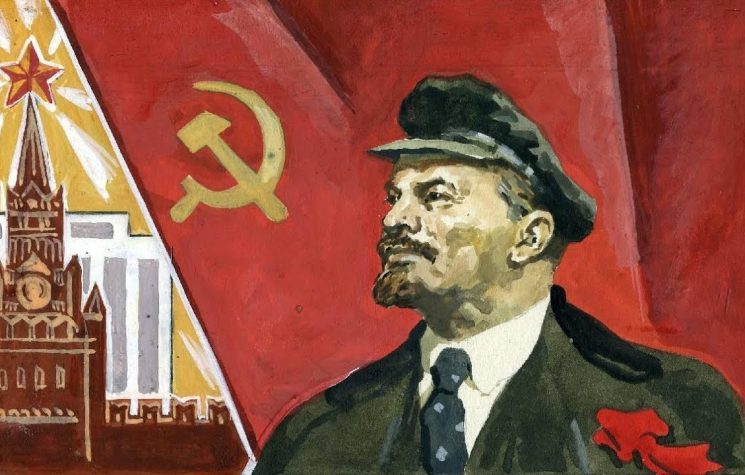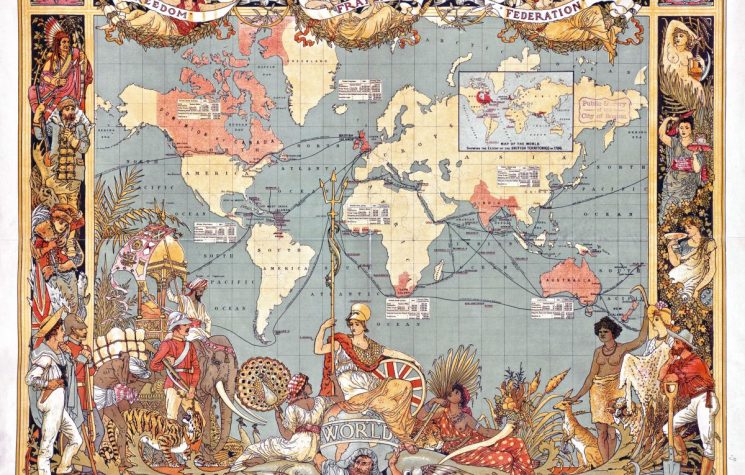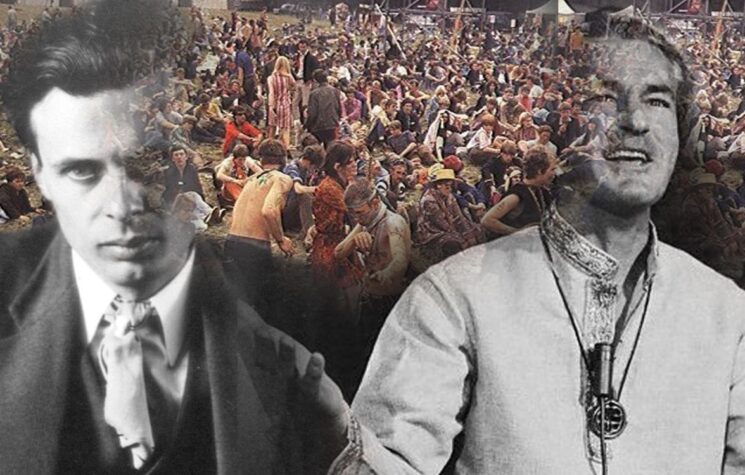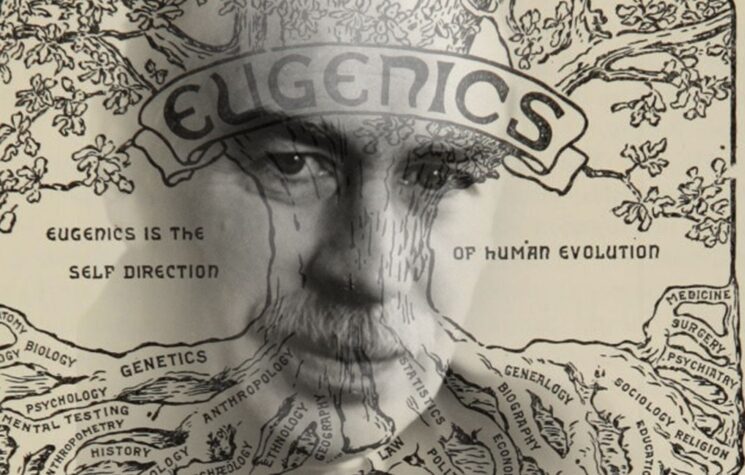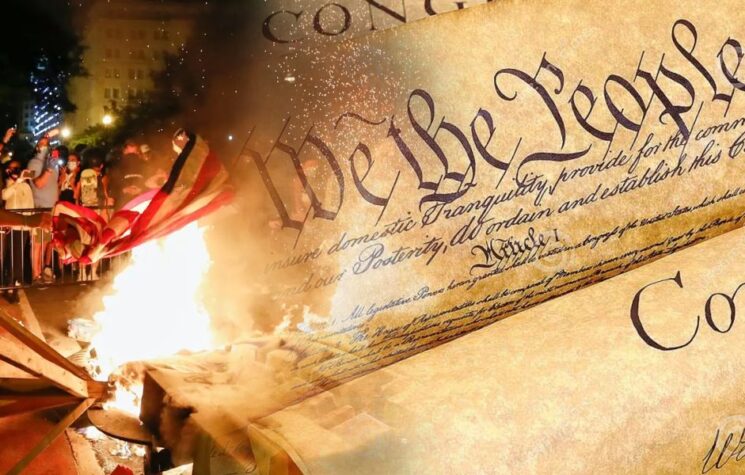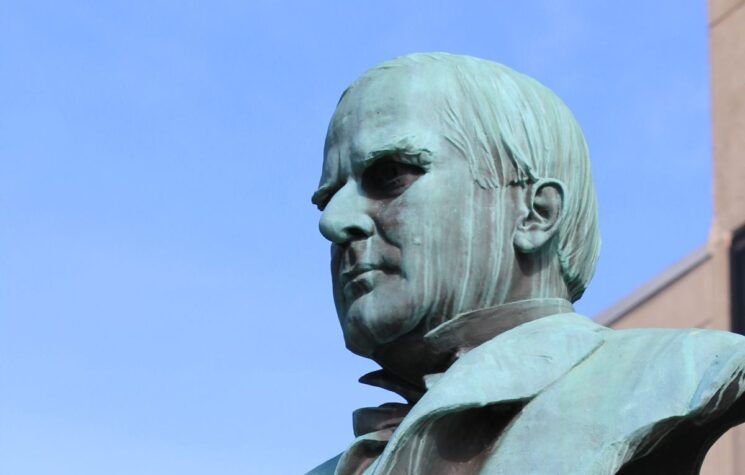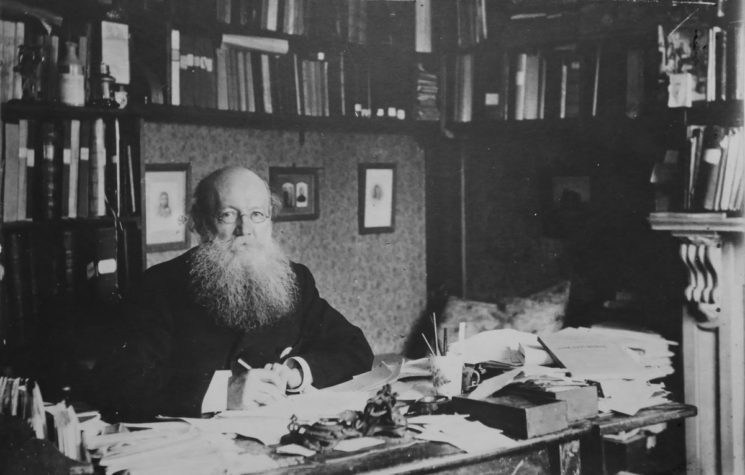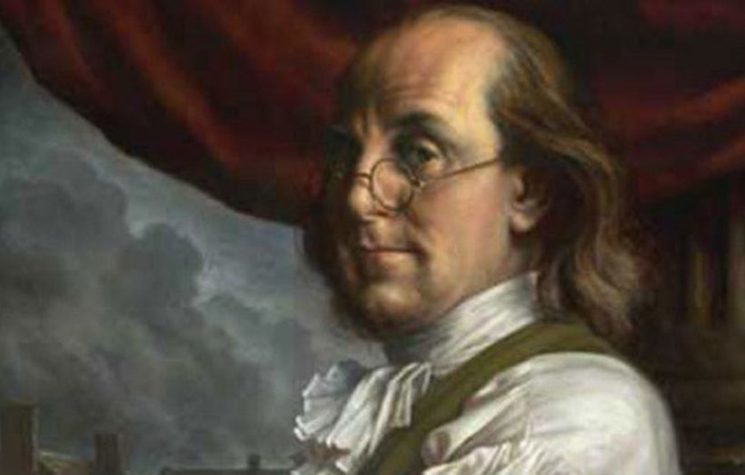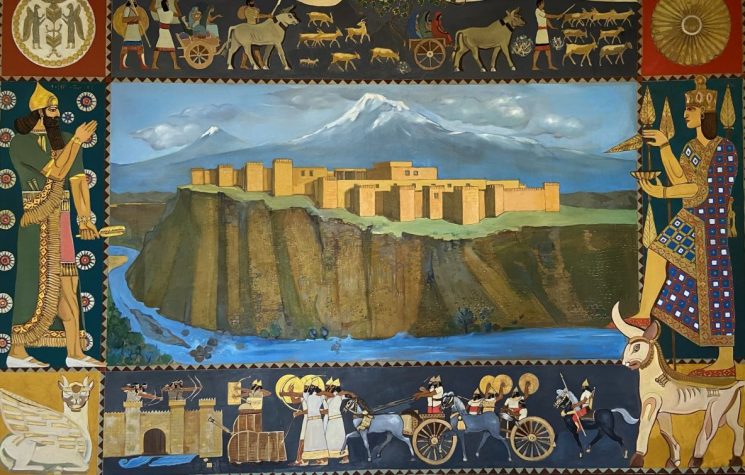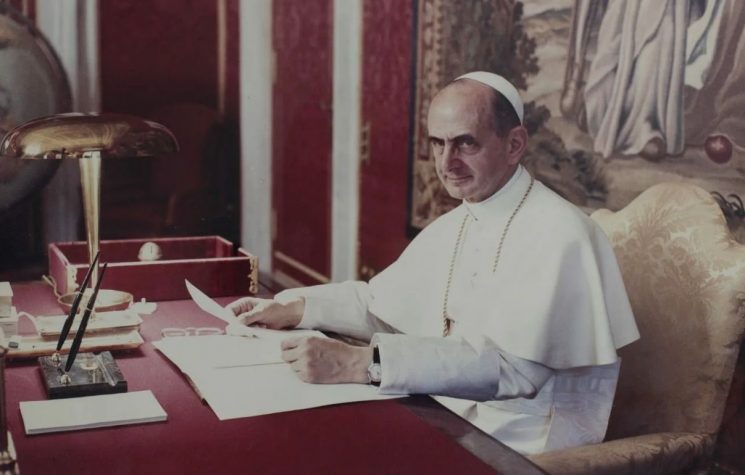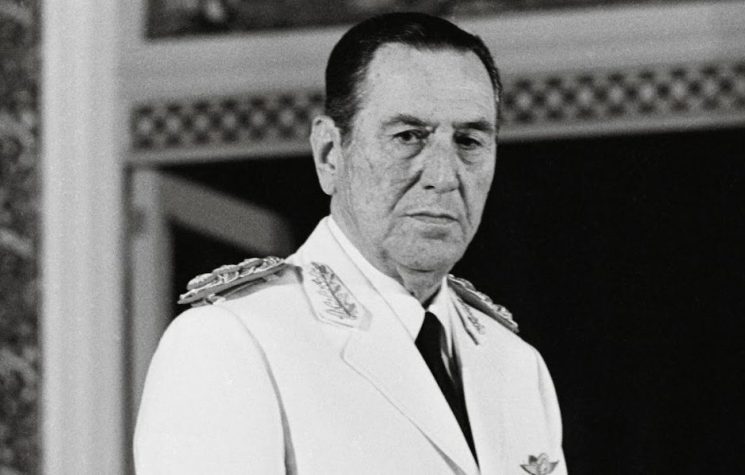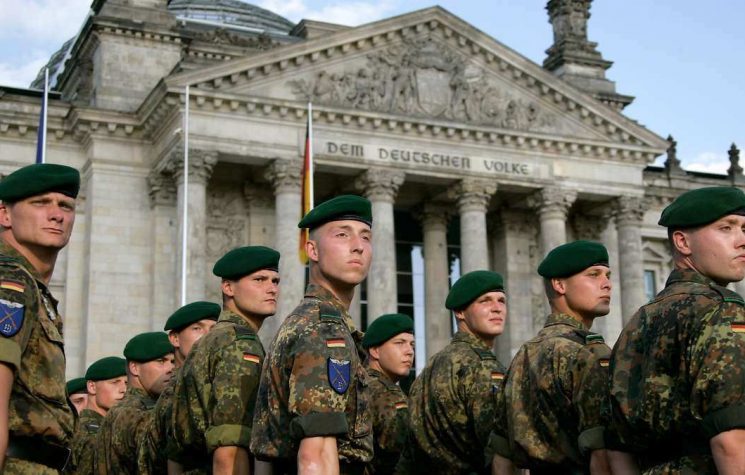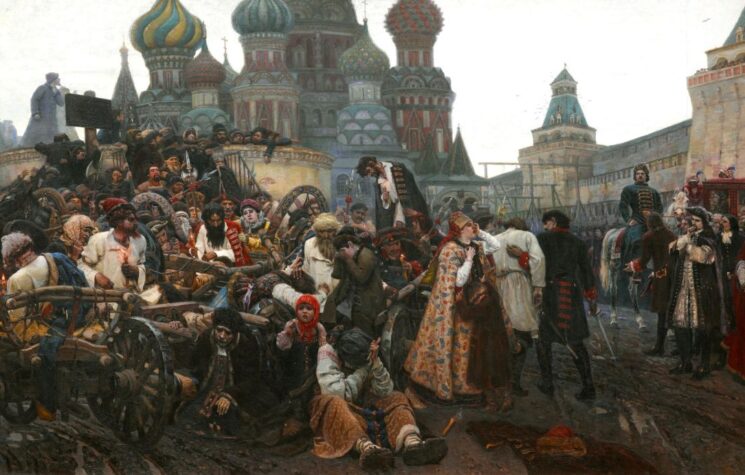This July 4th, a larger-than-usual shadow is cast upon America which has come face-to-face with some serious historic reckonings. While the existence of an oligarchy and international “deep state” should not be ignored as a political force of history- arranging wars, assassinations and promoting economic enslavement of people and nations throughout the centuries, the guilt cannot entirely be placed on this apparatus. As Shakespeare’s Cassius once said to Brutus “our fate… is not in our stars, but in ourselves, that we are underlings.”
The mob which Shakespeare mocked as a mindless instrument of tyrants in his play Julius Caesar, has again been deployed in America where George Soros’ funding has turned this social-justice beast against the very republic itself (ironically under the banner of Freedom from Tyranny” of course).
Instead of hearing calls to save America, break up the Wall Street banks or return America back to its anti-colonial heritage, today we hear only calls for tearing down monuments, and to undo the Constitution as a fraud wrapped in a lie built upon hypocrisy and white privilege with no redeeming value anywhere to be found.
I’d like to take this brief moment to do something a tad unpopular by honoring the positive traditions of the too-often forgotten America whose Father of Founding Fathers Benjamin Franklin, shaped not merely a revolution of 13 independent-minded colonies against the British Empire, but rather a global movement stretching from France, Russia, Poland, Ireland, Prussia, India and Africa!
Without this international array of republican-minded patriots across cultures, religions and continents, then the revolution of 1776 that established on this earth for the first time a system of government founded upon the Consent of the Governed and for the protection of inalienable rights would never have succeeded.
America’s Revolution as an International Affair
As I laid out in my last paper “Why Canada Failed the Ben Franklin Challenge of 1776”, Franklin’s sad return to the Continental Congress in New York from Quebec in May, 1776 was one of the few defeats suffered by the statesman. Franklin’s decades of work to bring the French Colony of Quebec into the independence movement was sabotaged by 1) the slavish illiteracy rampant among the peasants of the feudal system inherited from France, and 2) the rampant corruption of the Catholic clergy elite which signed a devil’s pact with the British Empire to keep the peasants locked into the empire. These factors would play into the collapse of the French Revolution in 1789 as we will see shortly.
One month after this failed effort, a four-man committee led by Franklin drafted the Declaration of Independence on July 2nd and made public on July 4th proclaiming:
“We hold these truths to be self-evident, that all men are created equal, that they are endowed by their Creator with certain unalienable Rights, that among these are Life, Liberty and the pursuit of Happiness. — That to secure these rights, Governments are instituted among Men, deriving their just powers from the consent of the governed, — That whenever any Form of Government becomes destructive of these ends, it is the Right of the People to alter or to abolish it, and to institute new Government, laying its foundation on such principles and organizing its powers in such form, as to them shall seem most likely to effect their Safety and Happiness.”
Although a slave owning degenerate named Thomas Jefferson is sadly given sole credit for this document (fueling the argument of those proclaiming America to be a nation built on hypocrisy), the fact is that the great abolitionist Ben Franklin guided the writing of this document from start to finish. Over 40 corrections to Jefferson’s drafts were made by the old statesman including the erasure of Jefferson’s desired wording of “property” derived from his love of John Locke for the higher Leibnizian idea of “happiness” preferred by Franklin.

Franklin had already fought to unite the colonies for over twenty years beginning with his 1754 Plan of Union at the outset of the French-Indian War adopted by the Albany Congress, but rejected by the individual colonies who were always kept divided amongst themselves. Franklin’s “Join or Die” cartoon had its origins not in 1776, but actually during the battle of 1754 and it was an open secret that the British Elite of the 18th century collaborated closely with French oligarchical families to keep the troublesome colonialists subjugated, and underdeveloped as part of the “balance of power” game of empire.

After Franklin’s July 4, 1776 success, he knew that America’s fate hinged upon his ability to engage the international network of statesmen, and scientists whom he had organized over the course of 40 years and especially since his 1752 discovery of electricity made him an international sensation earning him the title “Prometheus of America” and immortalized in the painting by Benjamin West.

This post-1776 phase of his plan took him to France where he was made America’s ambassador in Paris. It was here, that Franklin arranged the French-American Treaty of Alliance of 1778 that turned the tide of the revolution towards the American cause which had zero chance of success before this moment.
Franklin had already organized his allies in Prussia where Friedrich the Great voiced open support for the cause and the great military strategist Wilhelm von Steuben became the Inspector General of the Continental Army providing military drills and modern military techniques to the undisciplined “citizen soldiers” of the USA. The republican Polish military engineer and colonel Tadeusz Kosciuszko served as Brigadier-General in the Continental Army and the young Marquis Lafayette who arrived illegally in America along with other French troops before the 1778 alliance treaty, made invaluable contributions to the cause. Over twenty generals of the Continental Congress were Irishmen, and many led the later efforts to create an Irish revolution in 1798-99.

In his ambassadorial station in France, Franklin met many members of the European intelligentsia- including key Russian figures. Among them included a young woman named Ekaterina Dashkova– the younger sister of Catherine the Great and president of the Russian Academy of Sciences who became friends with the elder scientist and was soon inducted into Franklin’s Philosophical Society (becoming the society’s first woman and first Russian). In turn, Dashkova made Franklin the first American member of the Russian Academy of Sciences in 1781. It was through these connections that Franklin played a leading role in organizing the League of Armed Neutrality under the helm of Catherine the Great which ensured that vital supplies and arms would make their way from Europe to America without being blocked by British ships. Within the first 12 months, this League grew to include the Netherlands, Denmark, Sweden, Austria, and Prussia. To this day, Russia’s league created the foundations of Maritime law.
This early alliance sewed the seeds of a larger tradition of U.S.-Russia friendship which saved both nations at existential moments and is outlined brilliantly by American University President Edward Lozansky’s recent July 4th article.

Franklin’s French networks had deep connections into India as well, which made themselves felt in the French-Indian alliance of 1780 that saw pro-American Muslim leader Hydar Ali lead thousands of Indian soldiers on a march across Western Ghats where they attacked the strategic British Base of Fort St. George near the Port town of Madras. Ali was supported by French troops on land and sea under the command of Admiral Suffren. Hydar Ali had already defeated the British in 1760 and represented a powerful independence force in India that kept British oligarchs up at night (It would still be many years before Britain would gain control of this “Crown Jewel” of the empire). During this conflict, Hydar Ali’s forces innovated rockets which decimated British troops, and forced Britain to re-direct over 20% of their naval fleet from fighting in the Americas- this was a vital boon to the French and American forces a world away. Hydar Ali’s son Tipu Sultan even wrote a message to the Continental Congress in 1781 saying: “every blow that is struck in the cause of American liberty throughout the world, in France, India, and elsewhere and so long as a single insolent savage tyrant remains the struggle shall continue.”
America’s flagship of the Continental fleet was named the Hydar Ali in his honor.

In Morocco, the French were able to arrange an important dialogue between Emperor Sidi Mohammed and American officials which saved American shipping from the ravages of Barbary pirates who ruled the coasts of Africa and the Straits of Gibraltar. During the opening of the war, the British made sure to inform these Barbary pirates of American shipping and used these forces against American ships bound for Europe. Sidi Mohammed agreed to supply protection for America’s ships and guaranteed them safe harbor from the Tunisian and Algerian pirates. Soon the Continental Congress had passed an act which called for Franklin to lead a team of negotiators to work out a deal with Morocco and other North African countries.
Although international political chaos and the constant treachery and intrigue within America during its early years resulted in very little progress on this front, it is noteworthy that Morocco was the first nation in the world to recognize America’s independence on December 20, 1777.

Even though Franklin didn’t appear to have any direct contact with the Chinese during this period (who were busy fending off the British Empire’s lusting dogs of the East India Company who were preparing a new phase of Asiatic expansion), Chinese thought did figure prominently in the thinking of Ben Franklin and Thomas Paine. Franklin had published many writings on Confucius from 1737-1757, which shaped many points of wisdom in the Poor Richards Almanac. Writing to a friend in 1747, Franklin stated “Confucius was my example. I followed Confucius”. As Professor David Wang points out, many of his insights into civil administration and law derived from his studies of China.

While there are many more chapters to this international story, the lesson I wanted readers to come away with is that America was both more than you thought it was and also less than it was meant to be.
According to the intentions of such renaissance men as Franklin, the American cause was never meant to be a “local issue” defined by 13 rebelling colonies, but rather a new age of reason for all mankind.
Kindred spirits across Europe watched in horror as the first European nation to attempt revolution led by Lafayette and other leaders of Franklin’s network (who made the American cause a success) was overthrown by a Jacobin “color revolution”. The noble origins of the June 20, 1789 Tennis Court Oath which kick started the French Revolution were soon lost as a bloodbath (directed by British assets from the Foreign Office) channelled the rage of France’s peasant population against ALL of the elite, corrupt and noble alike, proclaiming “the revolution has no need of scientists”. The sound of the guillotine lopping off the heads of the great revolutionary astronomer/mayor of Paris Jean-Sylvain Bailey and chemist Antoine Lavoisier still resonates as a shame of France. Lafayette only saved his head long enough to end up in an Austrian dungeon for 5 years as punishment for fighting to overthrow hereditary systems and was immortalized in Beethoven’s only opera Fidelio in 1805.
The pro-humanist forces of Europe slowly came undone during the Napoleonic wars which culminated in the 1815 Congress of Vienna and Holy Alliance which re-established “peace” by banning dangerous books, teaching, and art that might awaken revolutionary feelings in the minds and hearts of Europeans. These Orwellian laws were outlined in the Carlsbad decrees of 1819 and ruined more than a few lives of great statesmen and teachers. This story was told in my paper “Kissinger’s Adoration of the 1815 Congress of Vienna”.
During this time, the British Empire came out again as a force of evil preparing a new phase of its global conquest with a crushing of the Hydar Ali spirit in India and a new age of opium wars against China.
In spite of this growing darkness, great poets who dreamed of that better age of reason produced some of the greatest and under-appreciated poetry with Percy Shelley and John Keats leading that movement in Britain, Robbie Burns in Scotland and such figures as Schubert, Heine, Schumann and Beethoven representing this spark in Vienna and Germany. Palmerston-Mazzini’s “Young Europe” anarchist mobs were periodically deployed to disrupt constructive nationalist tendencies throughout this period- laying the groundwork for “color revolutions” of the 20-21st centuries.
Beethoven’s 1824 Ninth Symphony setting Schiller’s great poem an “Ode to Joy” to music was a celebration of that dreamed-of age of brotherhood and creative reason which Franklin devoted his life to accomplishing and which today’s multipolar alliance has again awoken as a potential alternative to an age of darkness, war and collapse facing humanity in the 21st century.








